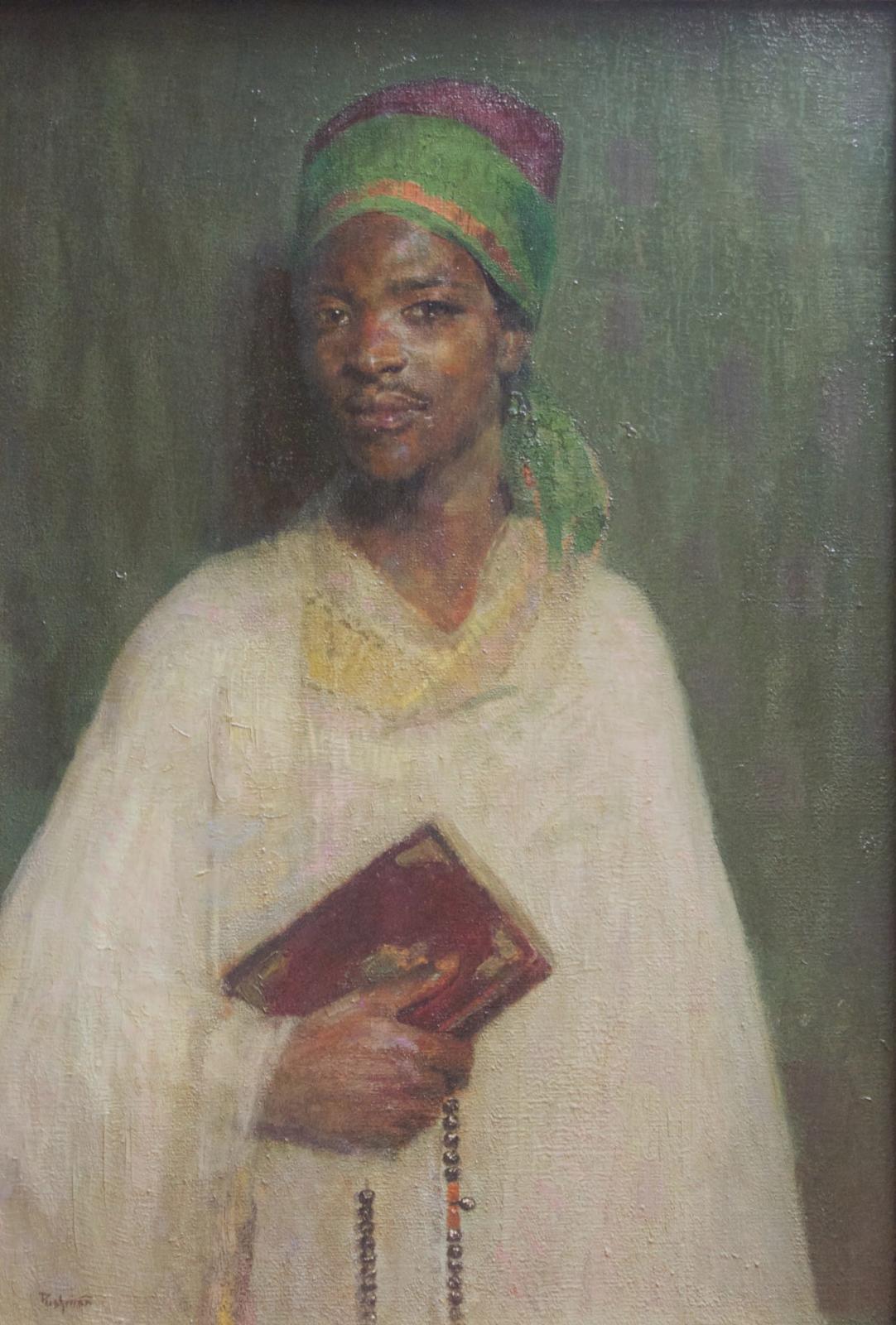





Framed: 47 x 35 ¾ inches
artist
Hovsep Pushman was born on May 9, 1877 in Armenia, a former republic of the Soviet Union at the juncture of Western Asia and Eastern Europe. In 1888 Pushman enrolled at the Imperial School of Fine Arts in Constantinople. In 1894 he journeyed to the United States and settled in Chicago where he furthered his art studies at the Art Institute of Chicago. In 1910 he traveled abroad to Paris and enrolled at the Académie Julien to study under Jules Joseph Lefebre, Joseph Nicolas Robert-Fleury, and Adolphe Dechenaud. These teachers encouraged Pushman to explore his roots in the East and thus he later embarked on a tour of the Orient where he encountered the exotic Oriental subject matter and motifs which would become the signature material in his later works.
By the time Hovsep Pushman opened his own studio in New York in 1921 he was devoted to one subject, oriental mysticism. These paintings typically featured oriental idols, pottery and glassware and were imbued with symbolism and spirituality. Often times they were accompanied by readings, which helped to explain their allegorical significance. It has been stated that "always there is age-old wisdom and symbolism of oriental culture in his pictures. Each object in the composition has its own inevitable place, its own special meaning which, blended with the whole, creates one single impression of great spiritual quality and of eternal beauty. Nothing could possibly be subtracted from any of his paintings; nothing added." (Excerpt from April 15, 1941 Chicago Sunday Tribune article “Pushman’s 1941 Exhibit to Open Tuesday” by Edith Weigle). Pushman was not an artist who looked to others for inspiration, with the exception of Chardin. Like Chardin's paintings there is a musical quality in Pushman's harmonious use of color, form, composition and brushwork.
Eventually Pushman returned to Chicago where he was known to paint both portraits and still lifes. In 1915 he became a citizen of the United States. From 1916 until 1919 he kept a studio at the Mission Inn in Riverside, California. He exhibited in Los Angeles throughout the 1920's and 1930's, even though he had moved to New York City permanently where he died on February 11, 1966.
provenance
Purchased from the Pushman Family c. 2003-4
Private Collection, Burbank, California





